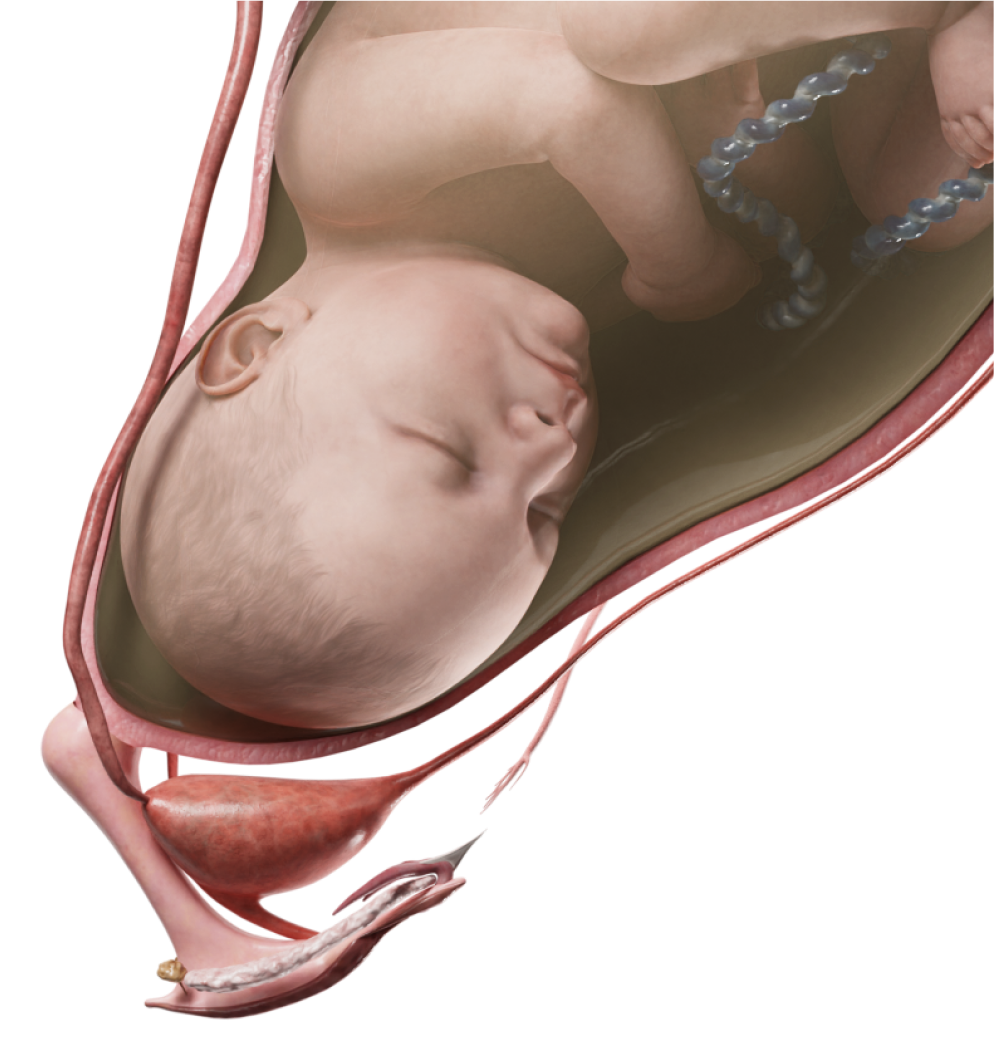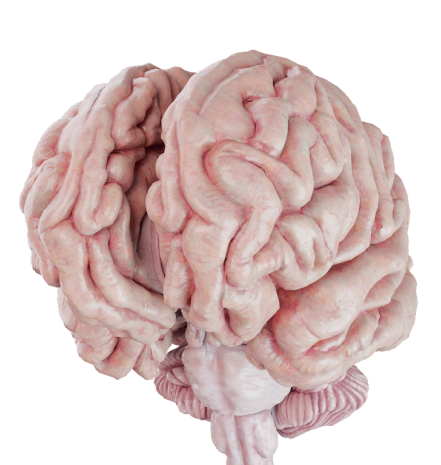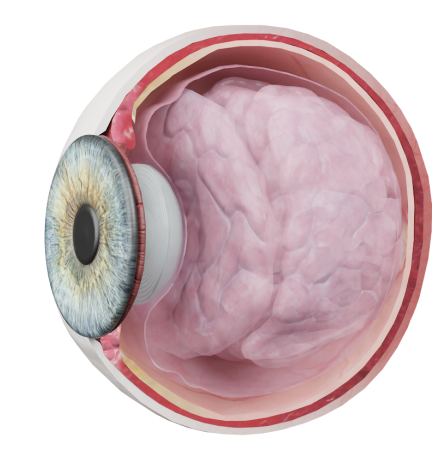Leiomyoma of the uterus
Uterine fibroids (also known as leiomyomas or myomas) are benign hyperplastic lesions of smooth muscle cells in the uterus or cervix.
Etiology
The exact pathophysiology of uterine fibroids is unclear. Various studies indicate that the myoma initiating cell originates from one of the smooth muscle cells of the uterus (myometrium). This cell typically deviates from the normal signaling pathways of cell division. As an estrogen-dependent tumor, uterine fibroids may also affect the estrogen and progesterone receptors, causing them to function abnormally compared to healthy myometrium. As it becomes larger, the myoma compresses the surrounding tissues (myometrium and connective tissue). This leads to a progressively growing pseudocapsule around the formation, which is rich in collagen fibers, nerve fibers, and blood vessels.
Epidemiology
So far, cases of uterine fibroids have not been identified in girls before puberty. The condition is more likely to develop later in life with prevalence of up to 80 % during reproductive age. However, postmenopausal women are rarely affected. Risk factors for this condition include early menarche, obesity, late menopause, family history of uterine fibroids, and alcohol consumption. At the same time, the odds of uterine fibroids are lower in women with late menarche, regular physical activity, and more than two deliveries. The effect of smoking on fibroid development is still uncertain and needs further investigation.
Classification
FIGO type:
0 - Pedunculated intracavitary;
1 - < 50 % intramural;
2 - ≥ 50 % intramural;
3 - 100 % intramural, contacts endometrium but does not protrude into uterine cavity;
4 - 100 % intramural;
5 - < 50 % protrude into cavity of lesser pelvis;
6 - ≥ 50 % above uterine subserous layer;
7 - Subserous pedunculated, 100 % in cavity of lesser pelvis;
8 - Other (e.g., cervical, broad ligament, parasitic);
2–5 - A hybrid classification to diagnose myomas that are found between the endometrium and perimetrium; it consists of two digits separated by a hyphen describing a myoma relative to the endometrium and perimetrium respectively.
Anatomic Pathology
Symptoms and management strategy typically depend on myoma localization. For this purpose, the FIGO classification system is used to categorize myomas into the following types:
Submucous myomas — FIGO 0–2;
Intramural myomas — FIGO 3–4;
Subserosal myomas — FIGO 5–7;
Intraligamentary myomas;
Myomas in the cervical and isthmic regions — FIGO 8.
Clinical Manifestations
Note that a uterine myoma may be absolutely asymptomatic. In this case, it may be detected accidentally during a routine imaging study. Metrorrhagia (intermenstrual bleeding), menorrhagia (heavy menstrual bleeding), or both, as well as abnormal uterine bleeding are among its general symptoms. Dysmenorrhea (painful periods), dyspareunia (painful sexual intercourse), pain in the pelvic region including the sacrum, gastrointestinal disorders, urinary symptoms, or any signs and symptoms indicative of anemia are less common. Myomatous nodes that deform the uterine cavity or grow on a peduncle inside the cavity may cause infertility. Such fibroids should be treated surgically irrespective of their size or other symptoms.
Complications
Besides anemia and infertility, myomatous nodes may undergo degenerative changes and cause torsion of a subserosal node pedicle, leading to acute abdomen symptoms.
Diagnosis
- Obstetric and gynecologic history includes any menstrual cycle abnormalities, infertility and/or pregnancy losses.
- A speculum examination alongside a bimanual examination helps rule out any vaginal or cervical abnormalities and assess the size and shape of the female reproductive organs. Moreover, cervical and isthmic myomatous nodes may be identified upon a speculum examination. During a bimanual examination, an asymmetrical uterus may be indicative of a myoma that necessitates further investigation. Pallor of the skin and conjunctiva should also be evaluated; if abnormal, attention should be paid to potential secondary signs of abnormal uterine hemorrhage.
Diagnostic Imaging
- Transvaginal ultrasound: This method is the gold standard for diagnosing myomas. The examination reveals a fibroid as a dense, well-defined, hypoechogenic mass. Varying acoustic shadowing is typically observed, with calcifications or necrosis affecting echogenicity.
- Hysteroscopy: This is a method to obtain a better image of the node within the uterine cavity. Unlike other techniques, this procedure makes it possible to both identify and remove intrauterine growths (if any).
- Magnetic resonance imaging (MRI) may provide a better understanding of the number, size, blood supply, and position of a myoma relative to the pelvis. However, when uterine fibroids are suspected, a routine diagnosis should not rely on this method alone, as there is no evidence that MRI can differentiate between leiomyosarcoma and leiomyoma.
Treatment
When choosing a treatment option for uterine fibroids, the following aspects should be considered: the patient’s age, symptoms (if any), their willingness to preserve fertility, and the experience of the healthcare professional. The exact technique is typically dictated by the location and size of the myoma.
Watchful waiting: This approach is preferred in women with asymptomatic fibroids. According to current guidelines, routine imaging follow-up is not required unless there is a change in symptoms or clinical findings.
- Medical therapy: This option aims to reduce bleeding and pain.
- Hormonal contraceptives: The hormonal method includes combined oral contraceptive pills (COCP) and levonorgestrel intrauterine devices (IUDs). Currently, a levonorgestrel IUD is a recommended therapy for symptomatic myomas. It does not cause any systemic effects and has a favorable safety profile. Fibroids that distort the uterine cavity should be treated with caution; in such cases, an IUD is more likely to fall out (a phenomenon known as IUD expulsion).
- Gonadotropin-releasing hormone (GnRH) agonist: This substance down-regulates the secretion of sex hormones by affecting the hypophysis. The lack of natural hormones, in turn, halts the growth of a myoma. However, long-term GnRH agonist therapy has been shown to cause statistically significant bone loss. For this reason, the use of this group of medications should be limited to six months or less; otherwise, they should be combined with an add-back therapy. This method aims to supplement the GnRH agonist treatment with a sufficient amount of estrogen and progestogen.
- Nonsteroidal anti-inflammatory drugs (NSAIDs): NSAIDs reduce prostaglandin levels, which are often elevated in women with heavy menstrual bleeding. Prostaglandins are responsible for painful uterine cramps during periods, making NSAIDs effective in managing menstrual pain. However, there is no data to prove that NSAIDs reduce the myoma size.
- Tranexamic acid: This substance has been approved for abnormal uterine bleeding but is not used to contain uterine fibroid growth.
- Selective progesterone receptor modulators (SPRMs): Short-term SPRM therapy has been shown to improve patients’ quality of life by reducing menstrual bleeding and inducing temporary amenorrhea. These medications may lead to benign endometrial alterations that are not indicative of premalignant lesions or cancer.
- Aromatase inhibitors (AIs) and selective estrogen receptor modulators (SERMs): These medications may also be considered to treat fibroids. To this day, evidence of efficient AI and SERM use to treat symptomatic uterine myomas is scarce.
- Surgical therapy:
- Endometrial ablation: This method is used as an alternative to surgery in women who primarily complain of abnormal uterine bleeding and are not planning to have children in the future. The procedure may be unsuccessful in cases of a submucous myoma as it distorts the uterine cavity.
- Uterine artery embolization (UAE): Although the number of relevant studies is limited, this minimally invasive procedure is considered to preserve fertility. As the general blood supply to the uterus decreases, so does the local blood supply to a myoma. This technique relieves symptoms of bleeding and has been proven most effective in patients with menorrhagia.
- Myomectomy: This type of surgery may also be an option to avoid hysterectomy and conserve reproductive outcomes. It can be performed via laparotomy, laparoscopy, or hysteroscopy. The surgical outcome depends primarily on the location and size of a myoma.
- Myolysis: This is a minimally invasive procedure that aims to destroy fibroids with a focused energy source, such as heat, laser, and more recently, MRI-guided focused ultrasound surgery. As a relatively new treatment method, there is not enough clinical data to support its long-term efficiency yet.
- Hysterectomy: This is the ultimate method when other techniques have failed.










